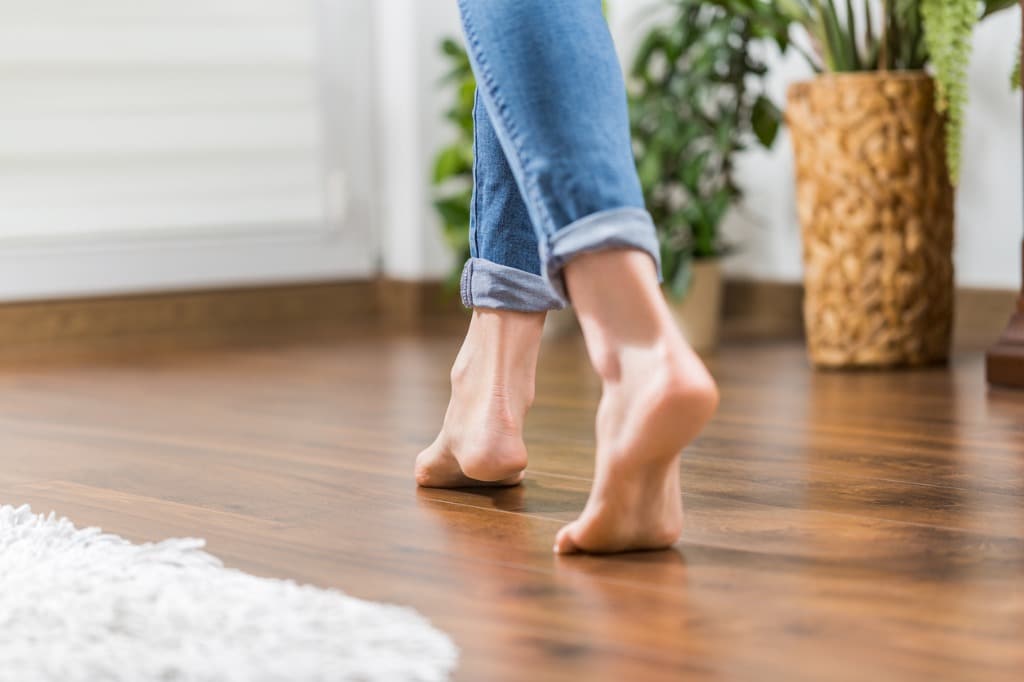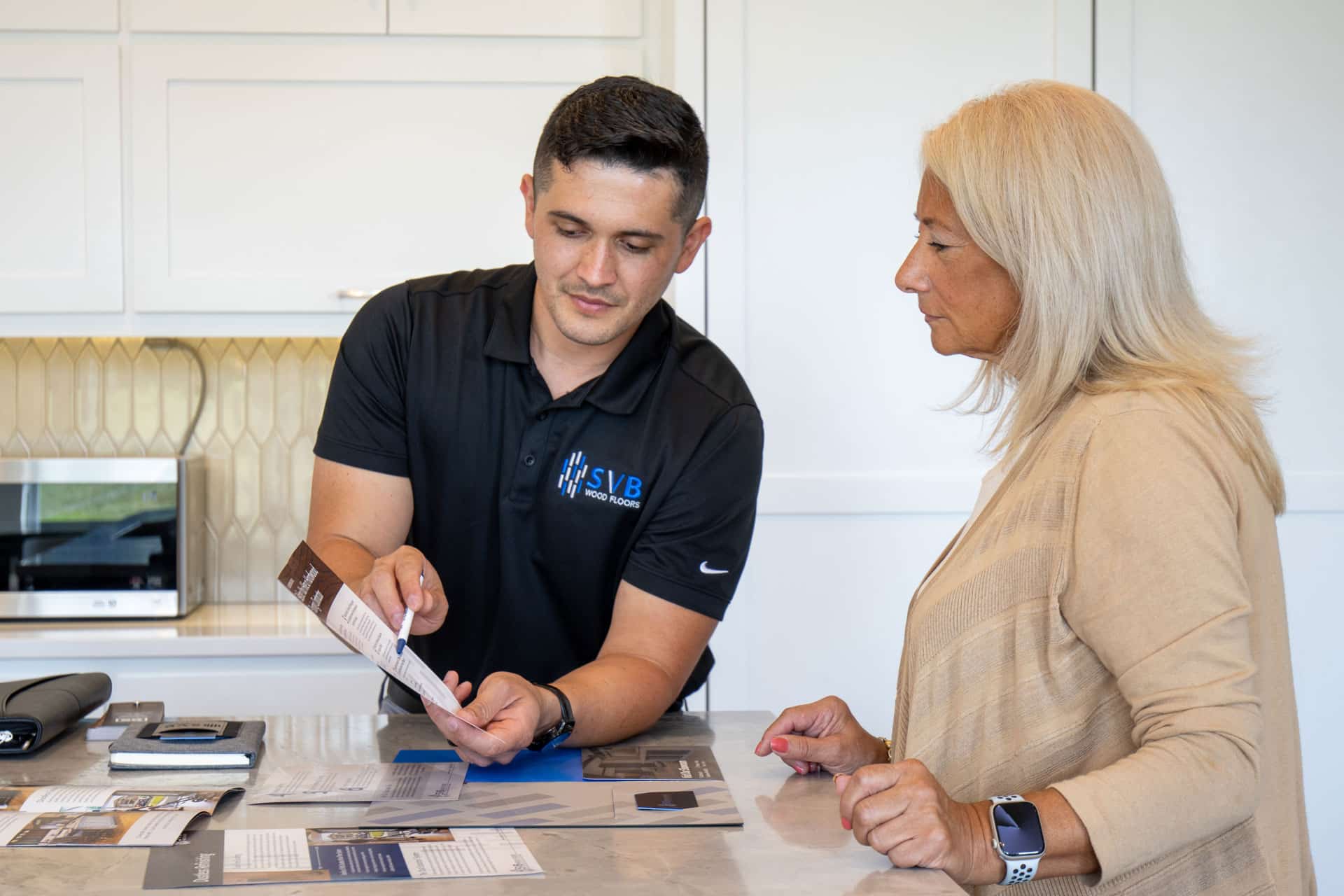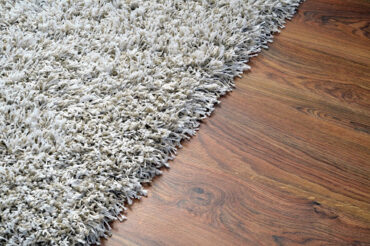
Squeaky hardwood floors might add some character to your home or commercial space. They’ll certainly let you know where people or pets are on the property. But those creaks and squeaks are going to get annoying at some point and make you long for a more quiet existence.
Fortunately, squeaky areas on the floor aren’t something you just have to live with or tolerate. You can fix them. Once you figure out the source of the problem, you can address the issue and eliminate those bothersome noises. Here are some of the common causes of creaky wood floors and how you can eliminate those squeaks.
The Causes of Creaky Wooden Floors
Before you can fix any problems with your wood floors, you should try to locate the source of the issue. Some of the most common causes of creaking and squeaking in this type of flooring include:
Changing Seasons
The first time you hear your wood floor squeak, ask yourself what the weather conditions are like. Solid and engineered hardwood floors are made from real, natural wood. That means your flooring is going to contract and expand with temperature changes. These fluctuations are perfectly normal.
If your wood floors begin squeaking during the winter, this indicates that your home’s heater, combined with the dry winter air, is causing your wood floors to contract. This gives the floorboards more room to move. Once the temperatures rise and the wood expands, the squeaking should disappear. You can lessen this effect by keeping the interior of your home at humidity levels between 40-60%.
Joist Problems
Joists support the structure beneath your floor and subfloor. These horizontal beams create the framework for your flooring and prevent excess movement from taking place. So, if there is too much movement in the flooring, it could be a problem with your joists.
If joists are loose or warped, this can result in gaps between the subfloor and the joists. If you suspect this is the cause of your problem, you will need to access the area underneath the flooring to inspect it.
Subfloor Problems
Another potential source of squeaky floors is problems with the subfloor itself. In fact, an uneven subfloor is a common issue that causes creaks and squeaks. If your subfloor isn’t level, it creates a space between the hardwood flooring and the subfloor.
It’s also possible the subfloor might have sustained water damage or simply deteriorated over time. It won’t hold fasteners in either scenario and will create a loose flooring issue.
How to Fix Squeaky Wood Floors
Once you’ve determined where the squeaks are coming from, you can figure out how to address them. If it’s a seasonal issue or something else minor, it might work itself out on its own. But, if the problems originate in your joists or subfloor, here are some ways you can try to stop the squeaks.
1. Put Wood Blocks Between Joists
Your floor joists may be too far apart, have deteriorated with age, or have some other issues that are causing them to move when someone walks on the floor above. You can strengthen this system by placing wood supports between the joists.
Use the same size and type of wood as the existing joists and fit them snuggly between the two as a brace. Put construction adhesive on the side that touches the subfloor and fasten the ends into each side of the joists with screws.
2. Install Shims in the Gaps
If you can get to the underside of your flooring system, have someone walk on the floor above while you listen for the sources of the squeaks below. There may be some gaps between the subfloor and floor joist that are causing the squeaks. Take a set of wood shims and some carpenter’s glue and simply slide (not nail) the shim into the gap. Repeat as needed.
3. Stabilize Warped Joists
Just as wood floors can expand and contract with temperature, so can your floor joists. If your joists have warped over time, or they were crooked to start, the subfloor will separate from them when someone walks on the floor above.
You can fix the problem by securing a 2×6 or 2×4 piece of wood into the warped joist. Hold the wood firmly against the joist and fasten it with screws.
4. Use Construction Adhesive
If there are long gaps along your joist, shims may not be the best option. Instead, put construction adhesive into the gaps using a caulk gun. When the adhesive hardens, it should stop any movement from above.
5. Screw the Subfloor to the Finished Floor
If your squeaky wood floors are caused by the separation of the floor and subfloor, you may be able to fix the issue from above or below. From below, you can send a short screw from the subfloor to the bottom of the finished flooring. The danger is that you can use too long of a screw and end up poking through the floorboards.
If you don’t have access to your flooring system from below, you can try to fix squeaks from above with finishing nails. Find each squeaking spot and nail the offending piece of flooring to the underlying joist. Make sure the nails go below the flooring surface and cover the hole with wood filler.
6. Use Floorboard Lubricants
If friction is causing your wood floors to creak, a floorboard lubricant might address the issue. Talcum powder is a dry lubricant you can apply to your floorboard cracks and joints that should stop small squeaks temporarily.
Contact SVB Wood Floors Today For Your Creaky Floors
If you live in the Kansas City metro area and have squeaky wood floors or require any other type of wood floor maintenance, SVB Wood Floors can help. For over 15 years, we have been serving the needs of residential and commercial clients throughout the area.
We offer thorough wood floor repair and cleaning services as well as high-quality wood floor products and installation. Contact us today to learn more about how our services can breathe new life into your home or business.




